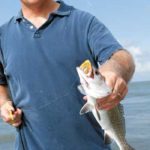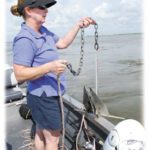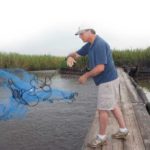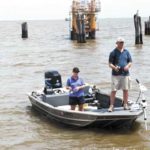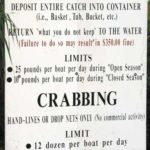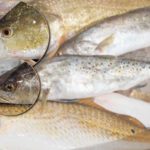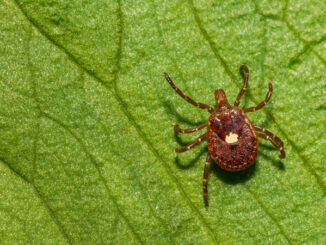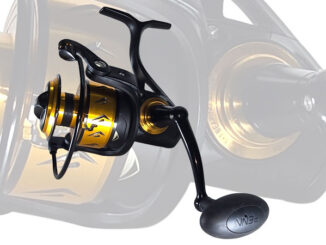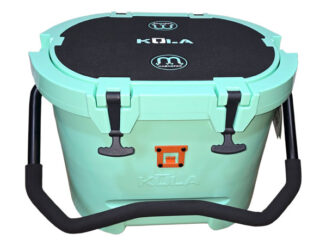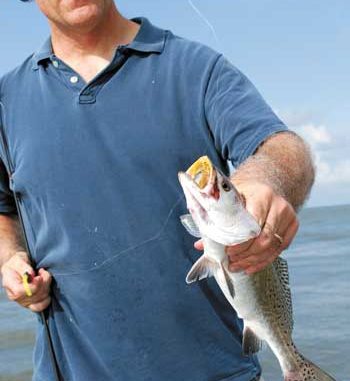
The corners of Louisiana’s coast have long gotten all the attention from trophy trout fishermen, but that’s beginning to change.
The hotspots for speckled trout fishing seem to be fairly well-known. The marshes of Terrebonne, Lafourche, Jefferson and St. Bernard parishes have oodles of trout, mostly modest-sized but making up in number for what they lack in size.
Calcasieu Lake, the lower Mississippi River Delta and Lake Pontchartrain are famous for the monster-sized yellowmouths they yield.
But one part of the state is missing from the publicity, the stretch of coast from the Atchafalaya River to the western shore of Vermilion Bay. But the news is leaking out. What the area lacks in publicity it has in speckled trout, both in size and number.
The ecology of the area, including Atchafalaya Bay, East and West Cote Blanche bays and Vermilion Bay, is dominated by discharges of silt-laden, nutrient-rich fresh water from the Atchafalaya River. Because the discharges occur in the eastern part of the basin, most trout fishermen concentrate on Vermilion Bay or on nearshore waters ranging from Tete Butte Reef in the west to Tiger Shoals in the center to the fabled Nickel Reef south of East Cote Blanche Bay.
Serious trout anglers from across the state began looking at the area when in the 2007 S.T.A.R. Tournament, Lafayette angler David Billeaud took from the area not only the largest speckled trout in the statewide tournament, but also the second largest. The fish weighed 7.92 and 7.84 pounds.
Was it a double accident?
Maybe. Maybe not.
In this year’s tournament, the biggest trout was again from the area, a 9.4-pounder, as are the third- and fourth-largest fish, at 8.6 and 8.45 pounds.
Not only do the waters of Vermilion Bay and offshore hold big trout, they also hold lots of spunky 2- to 3-pounders and great gobs of smaller tablefish, according to the area’s unabashedly chauvinistic booster, Pat Attaway of Lafayette.
He ain’t shy about bragging about the area’s fishing.
A day on the water with Attaway and his usual fishing partner, his wife Terri, went a long way toward unraveling Vermilion’s mysteries. On the trip down from Lafayette, Attaway explained that the area gets little publicity because it has almost no charter fishing guides.
“Charter guides do most of the internet postings,” Attaway said, “and bring in the outdoor writers who do magazine articles.”
The reason the area has few guides, as he explains it, is that for six months of each year, it is almost unfishable for speckled trout because of freshwater river discharges. Another effect of the highly seasonal nature of the trout fishery, he says, is the live bait mania for speck fishing that is gaining traction all over the state is missing here. Apparently, no bait shop can make it on sales for only half of the year.
Our launch destination was Maxie Pierce’s Landing on Highway 333 south of Intracoastal City. Maintained by the Vermilion Parish Police Jury, the spacious launch and parking lot were clean and well-maintained, and the launch fee was only $2. The couple usually launches here rather than at Cypremort Point State Park, the most popular jump-off point for fishing the area.
“This launch is where fishermen launch,” explained Pat. “At Cypremort Point, you get a lot of people launching who don’t know how to put a boat in the water, and the line can be a quarter-mile long.”
From the launch, the Attaway’s sleek and swift 19-foot-long welded aluminum Hanko made short work of the jog down the Intracoastal Waterway and Four Mile Cutoff before popping out in the open expanse of Vermilion Bay.
From the opening, a set of channel markers extended directly across the bay to Southwest Pass, a definite planned stop on the Attaway’s itinerary for later in the day. But first the pair planned to head slightly westward to check out Redfish Point and try to get some live bait “just in case.”
The water at Redfish Point was muddy, and after briefly probing the oyster reefs there, the Attaways ran to what is known locally as the Hog Bayou Weir to cast net for bait. While slowly easing into the mouth of the bayou because of the oyster reef at its mouth, Pat explained that several weirs in the area are good places to gather live bait, including the Prien Wier and the Game Warden Wier.
The weir, located on State Wildlife Refuge is obviously well-used, with formal fishing rules posted by the Louisiana Department of Wildlife and Fisheries. That day, the weir yielded only one measly shrimp but a nice supply of finger mullet and small croakers, bait the Attaways kept.
Once he cleared the reef at the bayou’s mouth and lined out toward Southwest Pass, the 150-foot deep channel between Southwest Point and Marsh Island, Attaway discussed the area’s oyster reefs.
“Unlike what some people have heard, Vermilion Bay isn’t paved in oysters,” he said. “Probably less than one percent of the bay’s bottom is reef, but to fish the bay and consistently be successful, a fisherman has to learn where the reefs are. A fisherman new to the area has to ride around and watch his depth finder, as well as look for where the other boats are.”
As he piloted the boat, Attaway explained that his annual fishing cycle starts in May or June, when Atchafalaya River levels typically have fallen enough to make fishing feasible. At that time, he fishes Southwest Pass and the nearer outside reefs, Diamond, Caldwell and Tete Butte.
In July, he is still fishing the outside reefs, but by August and through September and October, the fishing in the bay gets hot. Specks, some fairly large, can be found under sea gulls diving on white shrimp that the trout have forced to the water’s surface.
But Attaway says that even at this time of year, he prefers to fish over reefs rather than under birds.
“You get a lot of competition from other anglers for bird trout,” he said. “The proper way to fish them is to get upwind and drift to them stealthily, but some people try to chase them down with a trolling motor, forcing the fish to move.”
Trout fishing in Vermilion Bay is usually excellent in November, but by then Attaway has shifted his attention to duck hunting. He may fish in the split between duck seasons in early December, but usually the river begins to rise during the month. Some trout can be caught in pockets of decent water as late as January, but by March, the river almost always has caused a complete shutdown of the fishery.
Attaway admits that his trout season could be a little longer if he ventured out to Nickel Reef or Tiger Shoals, but he isn’t comfortable doing so in his boat.
“Tiger Shoals is 12 miles offshore from Southwest Pass,” he said. “The one time I tried to make the run to it, thunderstorms made me chicken out. I didn’t have enough boat under my butt.”
Attaway slowly guided his boat southward through Southwest Pass. Near the last red channel marker before open water, he shifted the engine to neutral, and intently studied the patterns of water currents. Here and there, clusters of birds were actively diving.
“My strategy here,” he explained, “is to fish on the shoulders of the pass channel where the current rolls up onto the shoulder. The turbulent current in these areas disorients baitfish, and that’s where trout gather to feed.”
While he was looking, he moved the boat at an idle, watching his depth finder with one eye.
“The key here is to anchor the boat as close to the channel edge as possible,” he said.
After selecting the spot he wanted, he directed Terri to drop and set the anchor. The stiff clay bottom defiantly rejected the flukes of the anchor. She had to pick up and set the anchor several times before it grabbed bottom.
With a broad grin, he acknowledged that Terri is a well-trained deckhand.
She agreed.
“I follow orders well,” she said.
Setting anchor in the strong current involved a lot of banging and engine noise, enough it seemed to scare every speckled trout out of the country.
“Don’t worry,” he said airily, “the fish will return because the food is here. Be patient.”
The water was roiling and rolling under and around the boat.
The first trout were small, too small to keep. Then 12- to 14-inchers started biting, followed by 16- to 17-inch specks.
Both Attaways were using single-rigged Deadly Dudley Straight Tails in either of two colors, chartreuse/red tail or purple/chartreuse tail.
“That’s pretty much it,” Pat said. “We don’t shift around a lot. We have had success, and we stick with it. Dudley should love us.”
Pausing during the steady stream of fish coming over the gunnels, Pat couldn’t resist bragging about Vermilion Bay.
“This is why I don’t have to go anywhere else to fish,” he said. “I can catch fish like this all day, often with a lot of 4-pounders. Every year for the past three years, I’ve caught several 6-pound trout.
“I love to eat fish. I eat small fish, and I eat big fish. I just love to eat fish.”
They had to move the boat several times as the bite played out in the spot they were in. Each time, Terri worked hard on the anchor.
“She’s my anchor girl,” said Pat proudly.
Terri, with an answer for everything, was quick with a retort.
“I’m the net girl and the bait girl too,” she said.
On the shoulders of the pass, keeping the baits in constant contact with the bottom, while letting the current help work the bait back to the boat, was the key to catching fish. They use the lightest jig heads that will do the trick, ¼-ounce or 3/8-ounce. Fishing in the pass is done strictly tight-line, although they admit to often using popping corks and, occasionally, topwater plugs over reefs away from the pass.
Before they limited on speckled trout, Pat decided to tour some other spots outside of the pass. First stop was Caldwell Reef, immediately west of the mouth of Southwest Pass.
From there, the next stop was Tete Butte reef, farther to the west. Although it wasn’t near low tide yet, large sections of the reef were exposed. The thought of your boat hitting such a hard reef with just enough water to cover it is sobering.
Finally, the Attaways probed a couple of offshore platforms within three miles of Marsh Island. At no place did they find enough fish to justify cradling the trolling motor and dropping anchor. These reefs and platforms usually yield bigger specks than the pass does, explained Pat, so they are always worth trying. Unhappy with the murky water, he turned the boat back to the pass to pick up a few more fish.
But the specks were harder to come by. Redfish, a second-tier fish for the Attaways, seemed to have taken their place. While they fished and pecked away at reds and a few specks, Pat explained what newcomers to the area need to know to catch speckled trout.
Fishing success here is predicated on Atchafalaya River water levels, he said. The Butte Larose gauge on the Atchafalaya River is what the area’s fishermen monitor. If the gauge is at 10 feet and falling, some success may be had on the outside reefs, such as Nickel, Diamond and Tete Butte.
If the gauge is at 8 feet and rising, the odds are 50-50 on catching fish. If it is 8 feet and falling, the bay is not ready yet, although it is on the verge of being right. Trout can be caught at Southwest Pass.
At 6 feet and rising, it is worth going fishing. If it is 6 feet and falling, fishing in Vermilion Bay is usually getting good and the reefs outside are very good.
Below 6 feet, the fishing is good everywhere.
A secondary factor that Attaway monitors is water salinity. Readings from two Vermilion Bay salinity-monitoring stations can be found on the Louisiana Department of Wildlife and Fisheries website, www.wlf.state.la.us/fishing/programs/habitat/moreinformation.cfm.
Attaway advised that the absolute reading for a station isn’t as important as is the trend in numbers, because a single reading can be skewed by a heavy local rainfall event that will temporarily layer fresh water over salt water. He admits that in general, 4 parts per thousand (ppt) of salinity catches his interest and that 7-12 ppt is great.
Wind direction and speed are factors, as well. Rough 15-knot winds will stir up the bottom and make the water muddy, although the water can clear up in three to four hours after the wind dies.
A modest wind from the south or southeast when the river is at 8 to 10 feet can mess up fishing because it blows in muddy, fresh river discharges. Conversely, the same strength wind from the southwest will blow high-salinity, relatively clear water into the area.
His last piece of advice for a fisherman new to the area is to buy a good map and study it, and when running his boat parallel to Marsh Island, to do so at least a mile or a mile and a half out.
“If you run a half mile out you will hit a reef,” he said emphatically.
